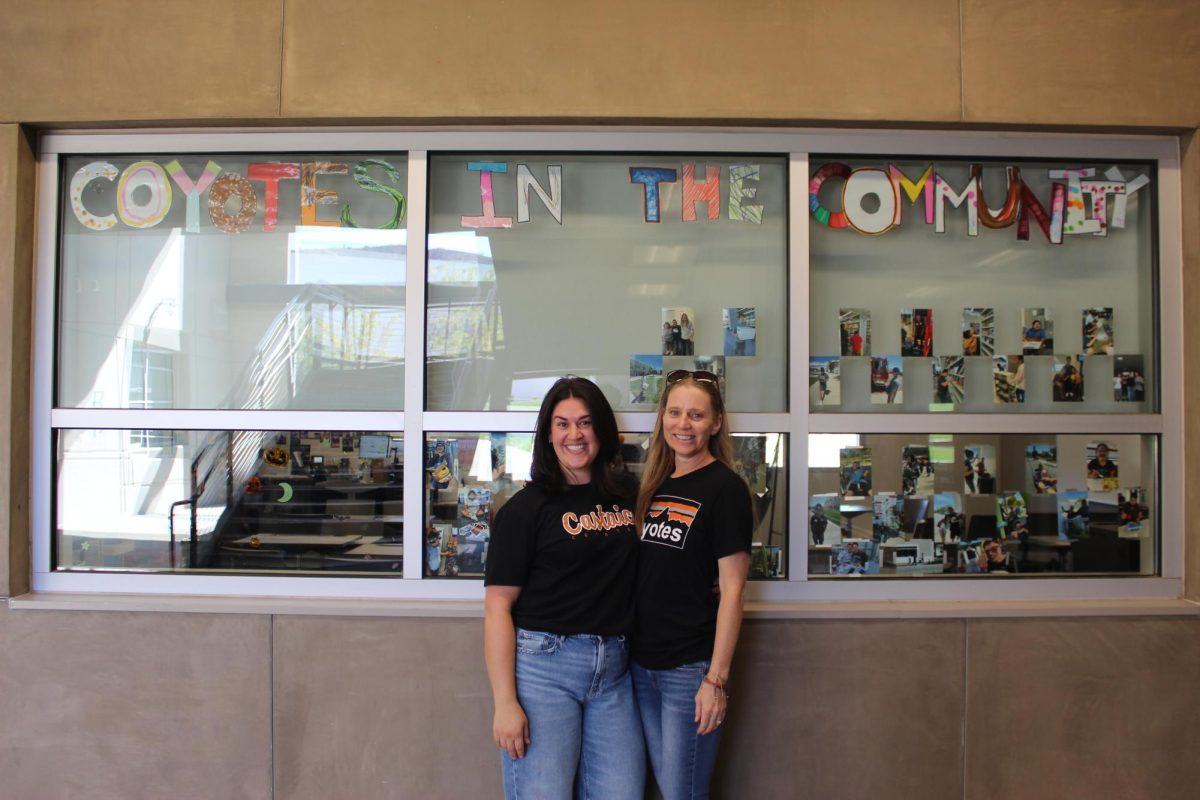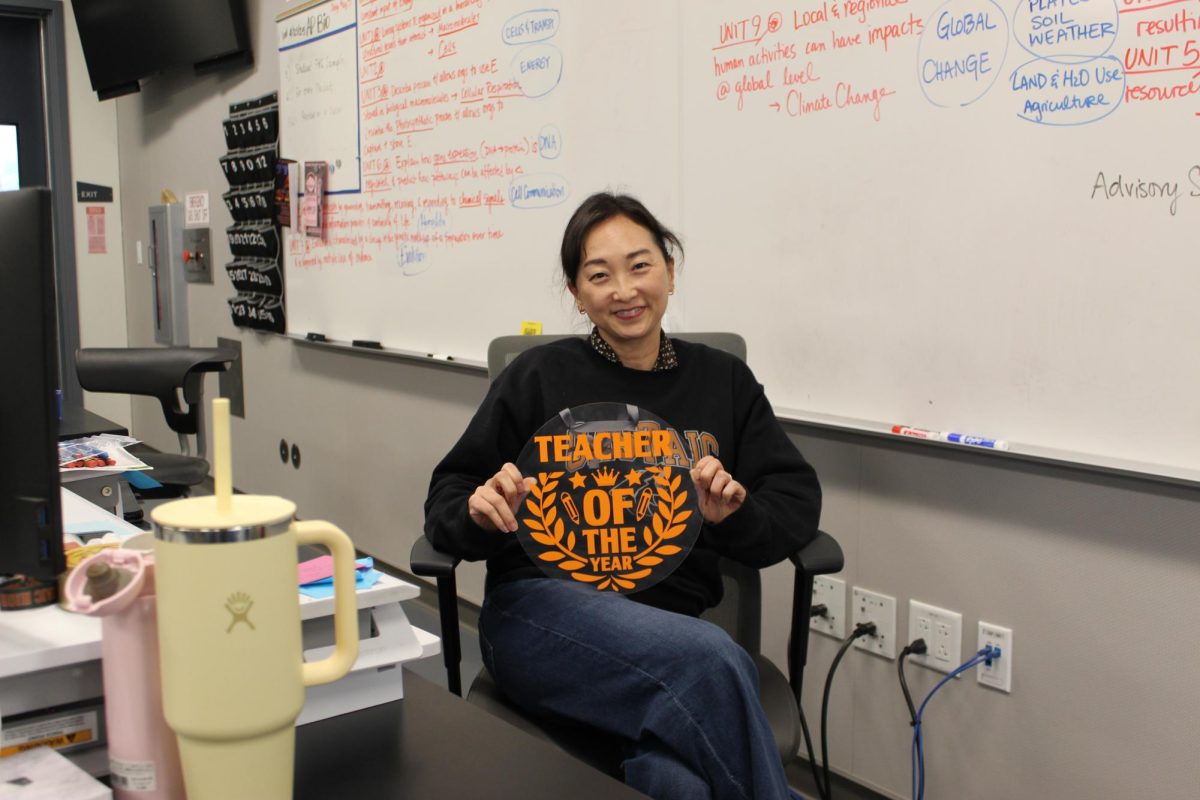Clothes have been on our backs since the early ice age, estimated to be over 100,000 years ago. Maybe the cavemen weren’t Depop warriors, but fashion sustainability has long existed through the exchange and upcycling of furs and cotton, tunics and sandals.
Sustainability is more relevant today as fashion is responsible for over 10 percent of human-caused greenhouse gas emissions, and 20 percent of global wastewater, and uses “more energy than the aviation and shipping sectors combined”, according to Colombian Climate School.
This is because consumption as a whole has increased, especially in the fashion industry. More options, quicker trends, and more access make buying clothes easier than ever before. On top of that, there are about 50 “micro-seasons” of clothing per year as found by Green America instead of the two traditional seasons of spring/summer and fall/winter. Social media trends, fashion magazines, online shopping, and endless-seeming catalogs of ‘what’s in’ and ‘what’s out’ have built a consumeristic nerve that for many is hard to resist– I know the feeling all too well. In fact, McKinsey & Company, a management firm, reported that consumers tend to buy 60 percent more clothes in 2021 than in 2000 and keep those clothes for half as long.
And often sustainability can seem over-complicated and difficult, especially since the media can portray it that way. But whenever I wear one of my mom’s old shirts or dig out a used belt at the flea market, I’m practicing sustainability. Rewearing and repurposing gives old clothes a longer life, keeping them out of landfills. Besides, we don’t need a handful of people doing sustainability perfectly. We need millions of people doing it imperfectly.
Sustainability, by definition, is the “avoidance of the depletion of natural resources in order to maintain an ecological balance.”. In real talk, it means to make sure we don’t dry out what we have so the earth can stay healthy, and therefore, we can stay healthy. We’re running out of places for our trash. Green America reported that the 16 million tons of textile waste produced every year amounts to over six percent of total municipal waste. Fashion also uses up limited resources. Making clothes is measured as the second largest consumer of water in industry, using 79 billion cubic meters of it annually on a global level. That pair of jeans that you threw out because it fit your thighs weird used “7,500 to 10,000 liters of water– the amount a person would drink over 10 years.” So practicing unsustainable fashion, like throwing out those jeans that could’ve been donated or sold, or buying something you’ll only wear once, is draining billions of a resource so valuable to the sustainability of life. This is why sustainability matters, and why it’s important chiefly in fashion consumption.
Thrifting, lowering consumption, mending and repurposing clothing, and anti-fast fashion have reaped major internet attention in the past couple of years and have seen real-life effects. Here in our school, students actively try to be kinder to the environment around them while still enjoying the pleasure of the self-expression and joy found in fashion. 
Castaic senior Alexis Piedra sews, mends, and sources her clothes second-hand.
“Human nature is that you see who people are first before they actually get to know you. So to express yourself on the outside with your clothing, you get to show people who you really are with that,” she said.
To make and mend clothes, Piedra loves using recycled or leftover fabrics and materials. She purchases scraps from Joanne’s and accepts donations from other sewers who have extra supplies to give away. By doing th
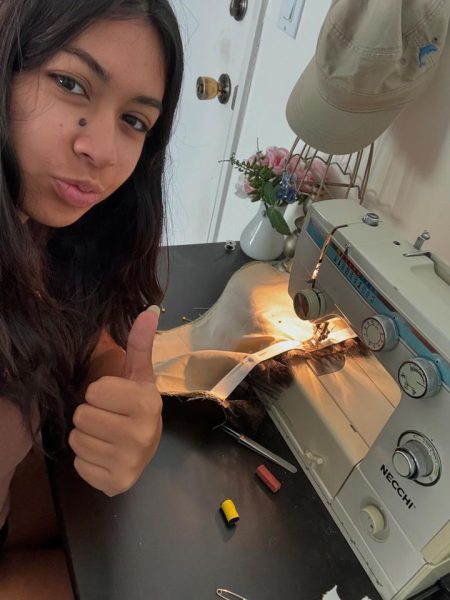
is, she’s keeping those resources from going to landfills and instead putting them in her closet as something fashionable instead.
Her mom has always been her biggest supporter inher journey to self-expression, and Piedra has shown interest from a young age.
“I never wanted [my mom] to dress me in kindergarten. I wanted to dress myself in first grade when I was inspired by Monster High dolls. And so she would let me dress up, but she also gave me the confidence to express myself and to be who I am,” she said.
João Pedro Matias, a junior at Castaic, had similar views on self-expression concerning fashion.
“I found light in the way of expressing myself in a way that everyone can see me.”
Matias spends many of his weekends searching for second-hand gems in Goodwills, flea markets, and other thrift stores and like many of his peers, is trying to save resources and money through these sustainable habits.
“When people just look at your outfit, they can kind of understand the vibe that you bring to a group,” he said.
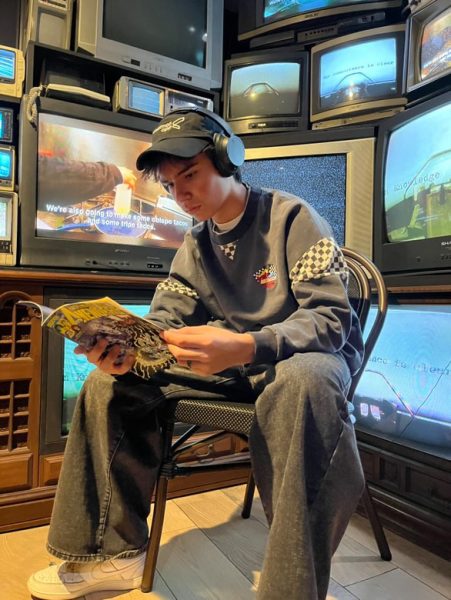
Senior Marianna Ospina Lopez also makes and mends her own clothes, creating many of the pieces she wears on a daily basis from scratch. Her passion for clothes started at a young age and is motivated by her family like Piedra.
But Lopez’s skills are generational. Her great-grandfather was a tailor and passed the skills down to her grandma who ultimately passed it down to Lopez.
“Growing up, I would be right beside them just sewing. And whenever they would make dresses for me, I would be like, ‘What’s the process?’” she recalled.
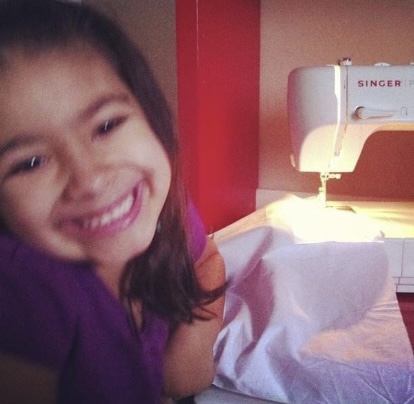
Not only does making clothes expand her possibilities and imagination, but she does the opposite of contributing to fast fashion by producing customized clothing of good quality that will last years to come. Additionally, like Piedra, she uses scrap fabrics she sources from Facebook Marketplace and archive fabric depots.
Besides just contributing to the recycling of clothes and finding unique vintage pieces, you can also turn secondhand clothing into cash.
“Well, I’m recycling old clothing. Recycled vintage. We’re stopping new fashion one step at a time,” said Micheal Scotto, a sophomore who, like Matias, can be found second-hand clothes shopping during his free time.
Scotto buys and sells on an online store and app called Depop, which Forbes named “Best for Curating an Onlin
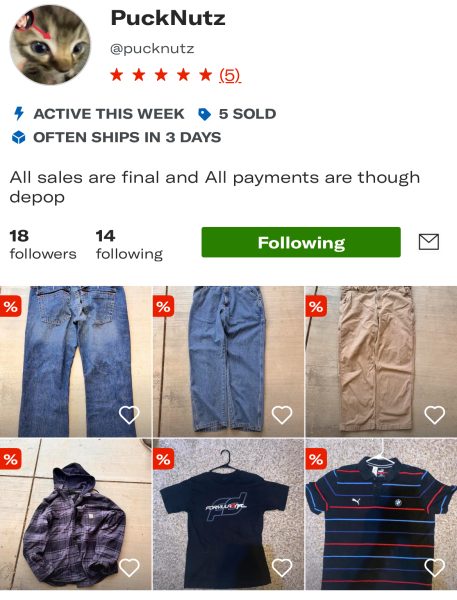
e Clothing or Accessories Store” in 2024. He not only is able to trade, sell, and consume sustainably but makes himself some extra cash.
He described his job as “going thrifting for someone else, basically.”
“I think that’s where I find the most unique pieces. And [second-hand clothes] have such a story and you probably wouldn’t be able to find it in today’s economy,” Piedra said about clothes she finds at the thrift.
Senior Norah Wilde is an advocate for going second-hand, a majority of her closet is made up of pre-loved pieces. 

“For me, fashion is self-expression, you know? If you can’t dress how you want, how are you supposed to act how you want? And a bad outfit– that’s a bad day. I feel like it’s such a simple way to get to know yourself,” she said.
And when it comes to clothes that she no longer resonates with, Wilde gets creative, “I would take a step back and I’d be like ‘am I gonna wear this shirt how it is?’ No, then I will cut off the collar on it because that’s how I’m gonna wear it.”
Modifications and mending are such a simple and affordable sustainability (and money-saving!) practice. And for many, expressing themselves and their interests through fashion merits daily satisfaction and confidence. As Wilde said:
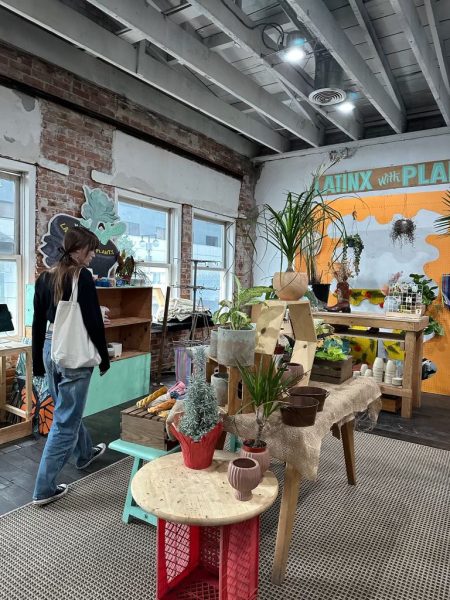
“Find your personal style. Whatever resonates with you. Because you only live once, so you might as well wear what you want.”



